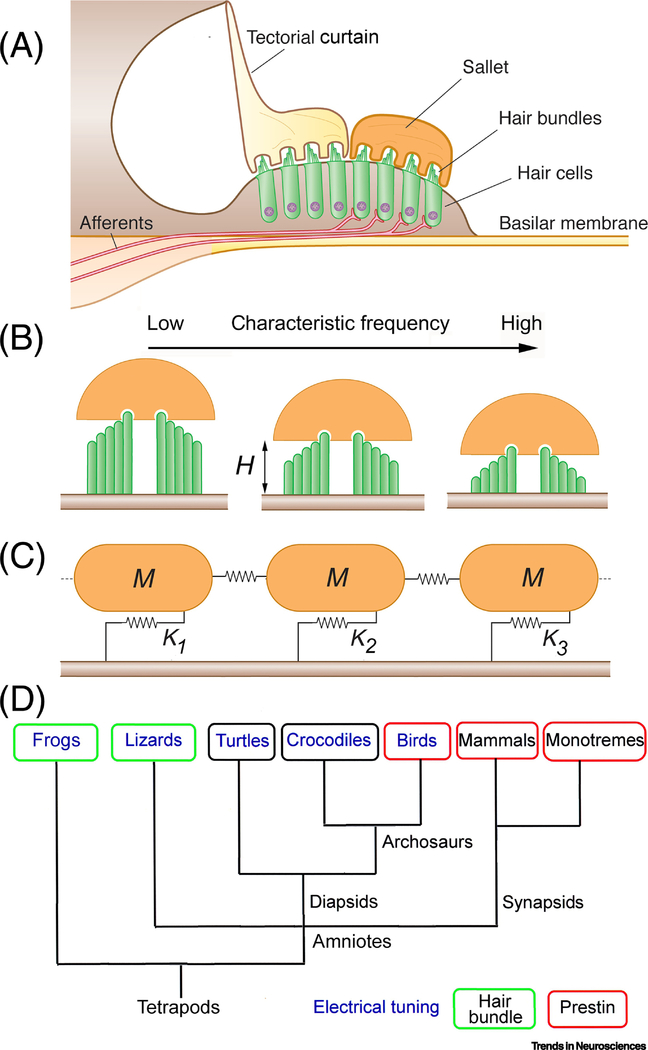Figure 6.
Lizard basilar papilla. (A) Transverse section of gecko papilla in high frequency region shows two types of tectorial structure. Hair bundles of non-innervated neural hair cells covered with a tectorial membrane that forms ‘curtain’ above papilla, whereas hair bundles of innervated abneural hair cells are surmounted by a tectorial ‘sallet’. (B). Schematic of hair bundles inserted into sallets for progressive distance from low- to high-frequency positions. Note the hair bundles are bidirectional and their height, H, decreases (16 μm to 4.6 μm; [100]) with increase in frequency. (C) Model of longitudinal section through salletal region depicting three sallets of mass M attached to hair bundles represented by springs of stiffness K1, K2, and K3, decreasing with increase in ‘H’. M was calculated by taking each sallet as a semicircular slice, 40 μm diameter, 3 μm thick and density 1000 kg/m3, giving a total mass, M = 1.9 × 10−12 kg. (D) Evolutionary tree indicating tuning mechanisms shown to operate in auditory hair cells of different vertebrate classes. Tree based on reference [112].

